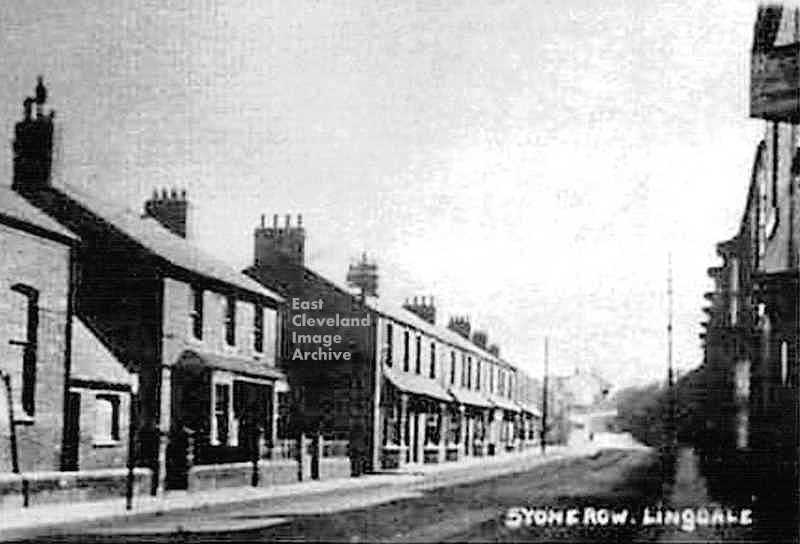
This view of Stone Row, with the Lingdale Tavern on the right shows buildings which are little changed today!
Image courtesy of Maurice Grayson.
|
|
||
 This view of Stone Row, with the Lingdale Tavern on the right shows buildings which are little changed today! Image courtesy of Maurice Grayson. 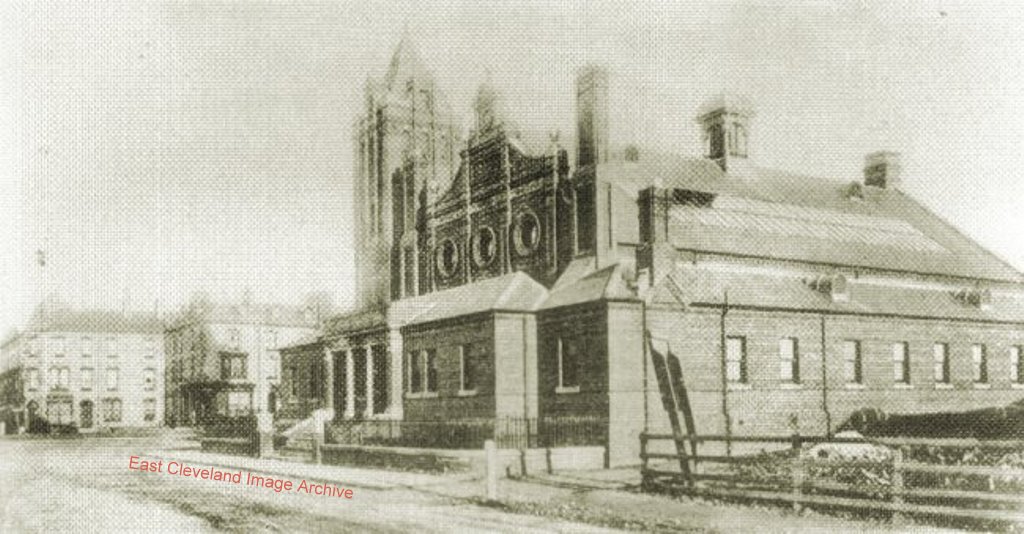 The original Victorian Baths beside the Square in Saltburn. Opened officially by Arthur Pease Esq. on Monday 11th May 1891. The building faced (across Dundas Street West) the railway station with a central swimming pool which was filled with seawater from an inlet offshore close to the pier. The extensive facilities included massage facilities; private brine, douche, and electric baths. Now sadly gone; demolition of the baths took place in July 1976 by Blair and Co. of Stockton and the town is now served by the Leisure Centre on Marske Mill Lane. Callum Duff tells us: ”In relation to swimming pool facilities in the town, Saltburn Leisure Centre was never seen as a replacement for the demolished Brine Baths. The baths had been damaged by a bomb in WW2 (which also destroyed a row of adjacent shops) and had been closed for some time before they were bought by Keith Watson in 1956. The building remained empty and was heavily vandalised until the site was bought by Tarmac Ltd in 1976 and the baths building demolished. Saltburn Leisure Centre actually opened in 1974 with the building being finally completed in 1975. As a young boy I remember visiting the soon to be opened building with my parents. Once during the day with my Mum where we stood in the cafe and watched the 25 metre pool being filled (perhaps for the first time) and another time with my Dad, Grandad and Brother where we had a look at the indoor bowling green and squash courts. I remember being in the 25 metre pool and looking out through the window to see workmen cladding the rest of the roof.” Image courtesy of Jean Hall and additional information courtesy of ’Saltburn-By-The-Sea Revisited’; thanks also to Callum Duff for the update. 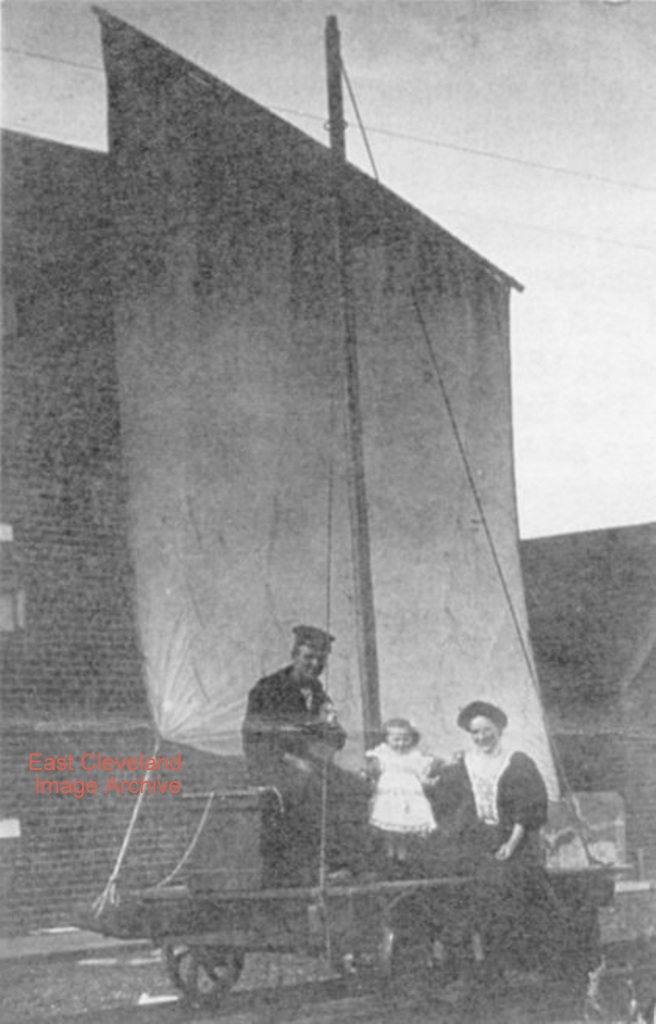 A quieter day for the sail train. Perhaps the family of the operator, appropriately in sailor uniform. Image courtesy of Mike Holliday. 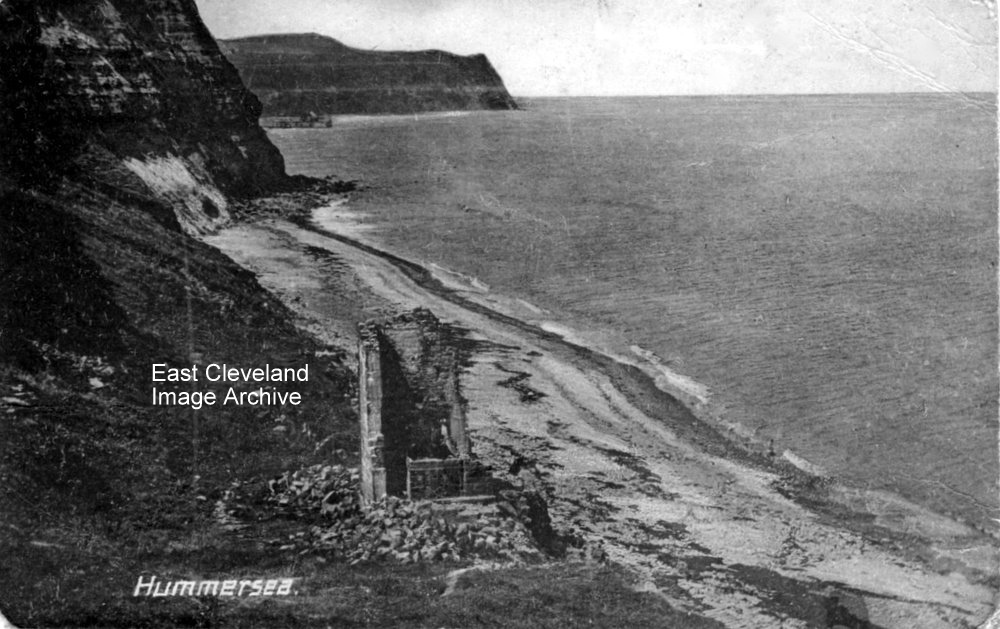 A different view of the Alum House at Hummersea, obviously this building as it became more derelict attracted the Victorian and post Victorian photographers. ”Gothic” buildings attracted considerable interest in the early part of the twentieth century, hence the frequency of images of some buildings or scenes. Mary Bielby who kindly supplied this postcard tells us: ”Our family received this card from Mrs Lincoln (a family friend) whilst in North Ormesby Hospital (another building also sadly disappeared) whilst she recovered, but she could not spell our name correctly”. Image courtesy of Mary Bielby and the update. 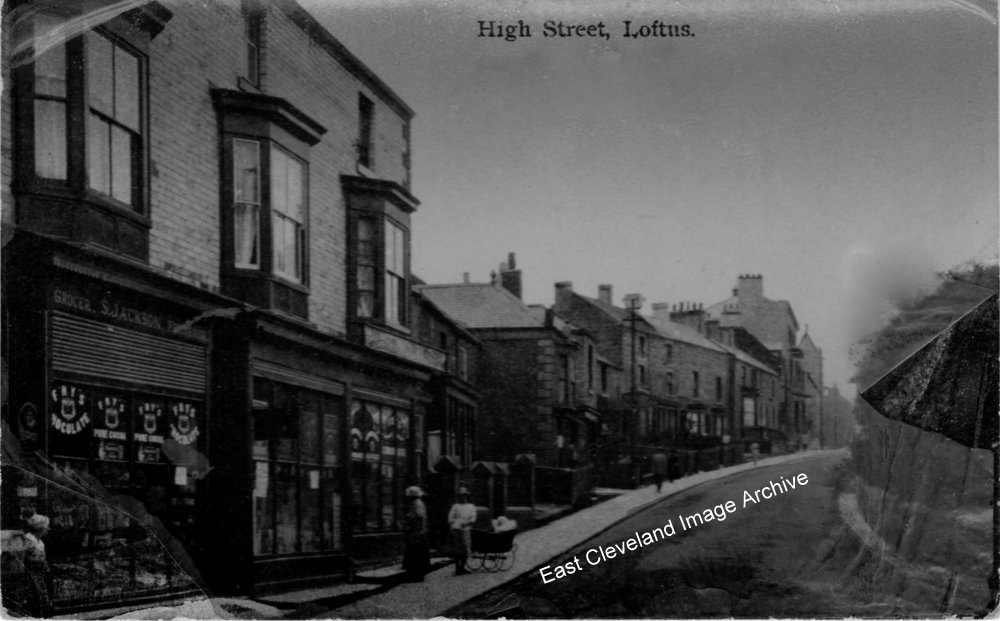 This view of the High Street, from the end of Arlington Street, shows two ladies viewing the shop window, whilst possibly preparing to push the pram up to the Market Place. With the weight of prams in those days, a good push! Image courtesy of Mary Bielby. 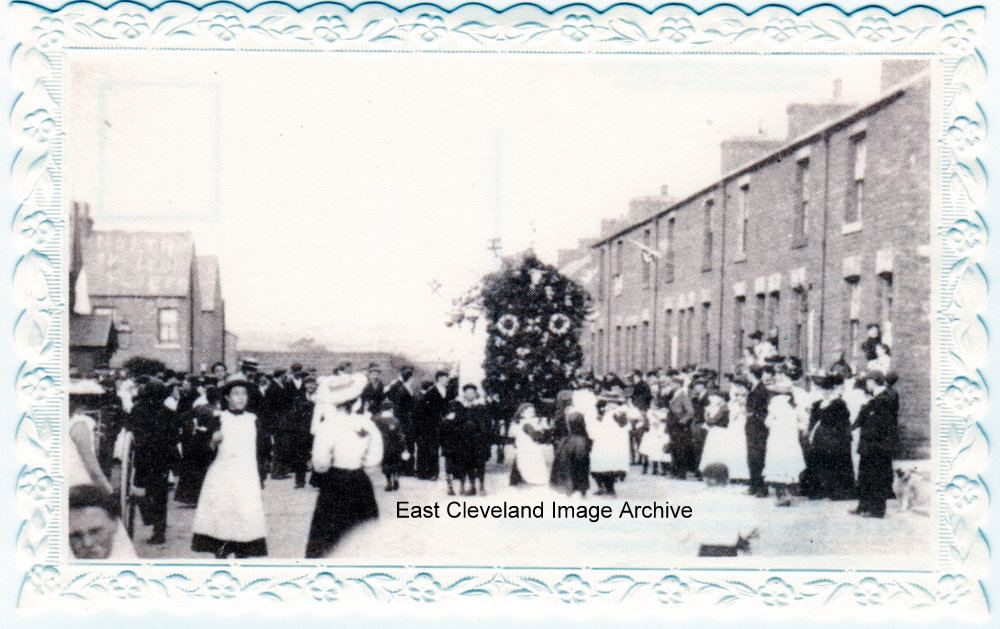 The title of this image sums up all the information we have on this scene. Can somebody out there assist, with why or possibly any of the participants? Image courtesy of Jeff Templeman. 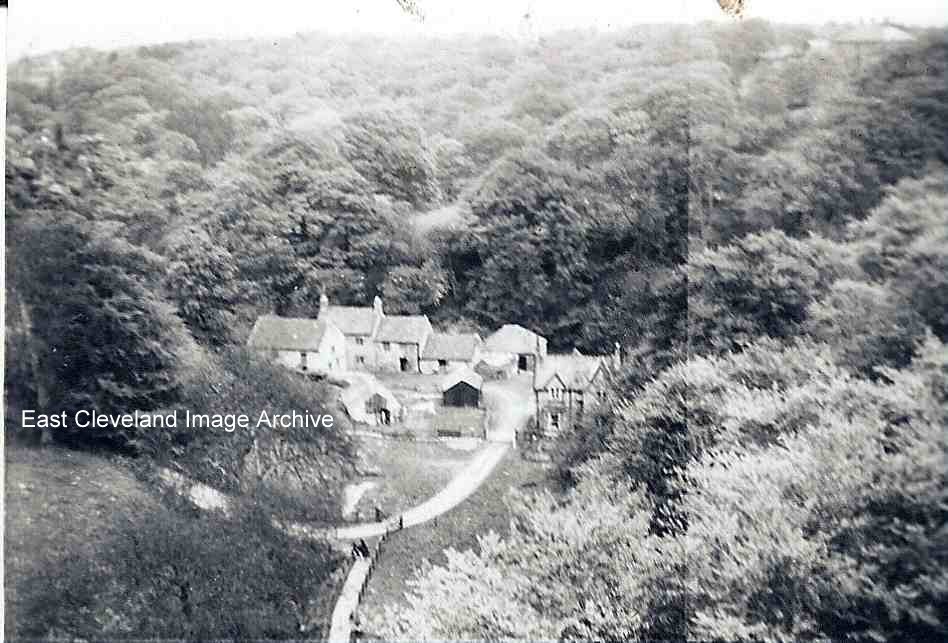 An aerial view of Marske Mill, taken from the viaduct beneath which it used to shelter. Demolished in the early 1970s, attempts have now been made to indicate the previous existence of the mill of which only small traces were evident; now to be viewed are some of the original mill walls. No evidence remains of the red brick Victorian farm-house which once graced the site. The Archive understands that the scene below was taken from a train driven over the viaduct pre 1952 by the engine driver; on a box Brownie camera. Owen Rooks assists with: “The photograph was indeed taken from the viaduct…by my father with the family box Brownie using the poor quality film that was all that seemed to be available in those days. He took it shortly before he retired in 1952 after a lifetime working on the railway, mostly on the track between Saltburn and Brotton.” Callum Duff advises: ”The house to the right of the mill was built by the railway as the Superintendent or custodian of the Viaduct’s house. It wasn’t excavated as part of the Marske Mill archaeological dig of 1986/7 because it wasn’t deemed to be of any archeological interest. I know this because I asked Cleveland County archaeologists this question when I worked for them in 1991.” Image courtesy of Owen Rooks who also kindly supplied the information, his father being the engine driver. Also thanks to Callum Duff for the update. 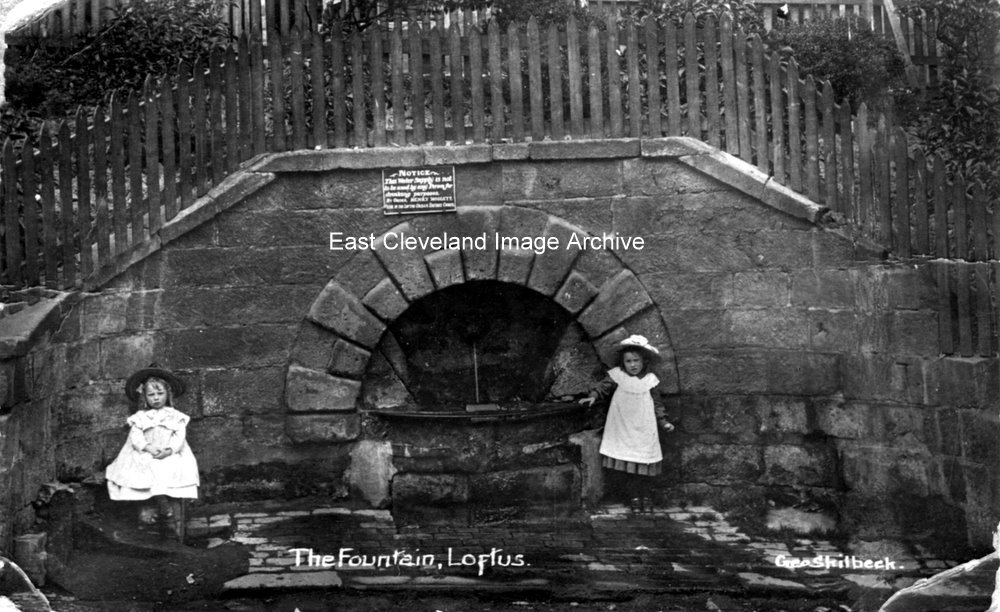 A very mysterious postcard entitled The Fountain Loftus. It predates the building of the War Memorial above it. It certainly appears dilapidated compared to the images of the unveiling in 1922. From the girls dresses a Victorian or Edwardian date is indicated. It seems when the Memorial was built the fountain underwent a complete makeover. Mary Bielby tells us: ”It is hard to tell if the War Memorial is on this picture. Notice says ”water not safe for drinking”, but used by our families in 1950s in summer when taps dried up – before Scaling Dam was ready – water looked very clean, tasted okay and we survived! Dad and several other users lived into their 90s! The children appear to be from a time when little boys were dressed in the same clothes as girls until the age of seven, later age five. Postcard published by Skilbeck Stationers in Zetland Road, Loftus (where Zetland Road Co-op now stands)”. Does anyone have information of it’s original construction and when. Image courtesy of Mary Bielby, to whom also thanks for the additional comment. 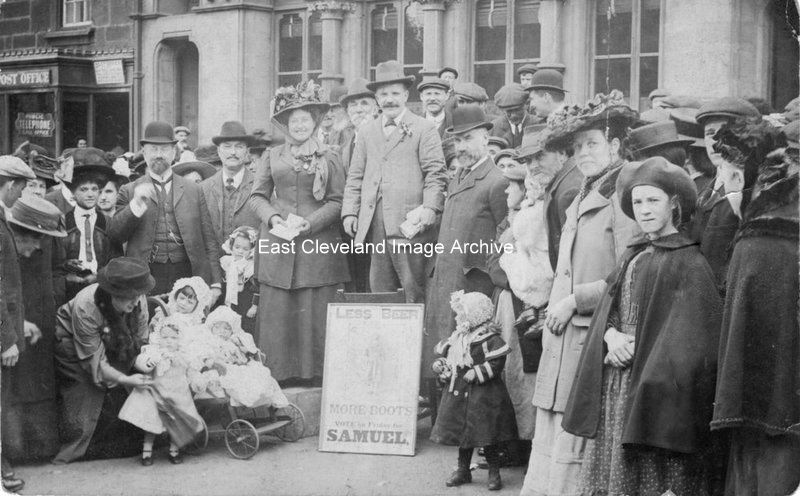 An election meeting on behalf of Herbert Samuel, Liberal candidate. Elected to Parliament in 1902, He had several posts in the Government, including Home Secretary, and Postmaster General, very appropriately standing next to Loftus Post Office. Mary Bielby tells us:”Despite popular belief Leon Brittain was not the the first Loftus MP to hold a Cabinet office, Herbert Samuel (Mr or Sir!) was about sixty or seventy years ahead of him!” Herbert Samuel was knighted in 1920; the placard proclaims ’Boots instead of Beer’, perhaps he is being supported by the Temperance Movement. Bill Danby in ”Skelton-in-Cleveland in History” tells us: ” The Labour MP, Keir Hardie made a speech at Marske in favour of a Labour candidate in Cleveland and the Miners Association held a meeting in Saltburn, but in the end no representative was put forward. This displeased many in the Independent Labour Party, one of their leaders calling Samuel a ”plutocratic Jew”, because he was an Oxford man, who had been left a lot of money by his banker father. In the end it was a 2 horse race with Herbert Samuel gaining 5.834 votes to the Conservative, Geoffrey Drage’s 3,798. Samuel retained the Cleveland seat until 1918, serving later as Postmaster General and then Home Secretary. In the following years he was High Commissioner to Palestine 1920/25 and involved in the creation of Israel, led an inquiry into the Mining Industry, leader of the Liberal Party, made a Viscount in 1937 and died at the age of 93 in 1963.” Image courtesy of Mary Bielby and many thanks for the update regarding Cabinet Ministers. Also many thanks to Bill Danby for information from the Skelton website. 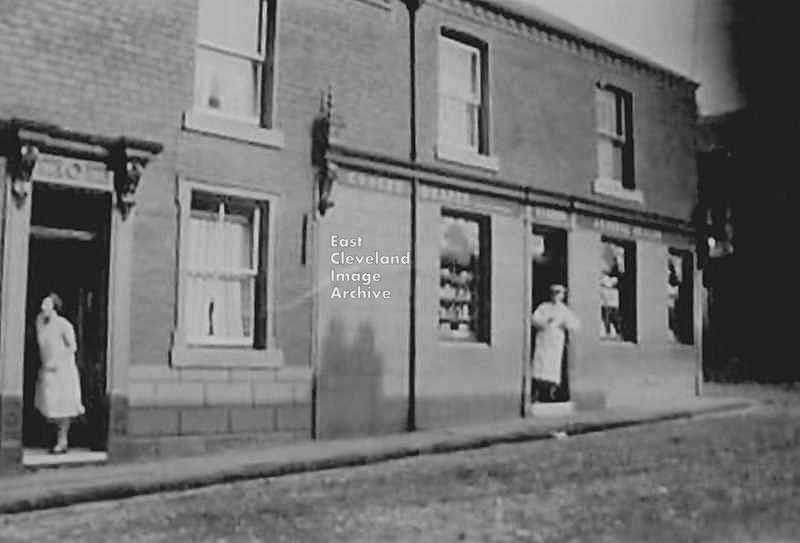 Reid’s shop, Dixon Street, Lingdale; a grocers, drapers, and general dealers with Sam Reid in the doorway. Mike Smith tells us: ”Sam Reid was the owner of the shop along with his wife Doris; I called in here on a morning on my way to school to get sweets and I also lived in this street.” Derek Dobson recalls: “I remember getting threepence for Mrs Reid’s sweets; lovely shop, lovely people.” Image courtesy of Maurice Grayson and thanks to Mike Smith and Derek Dobson for the updates. |
||
Recent Comments